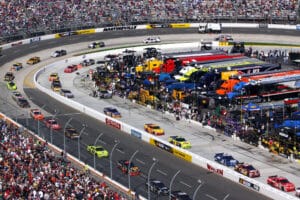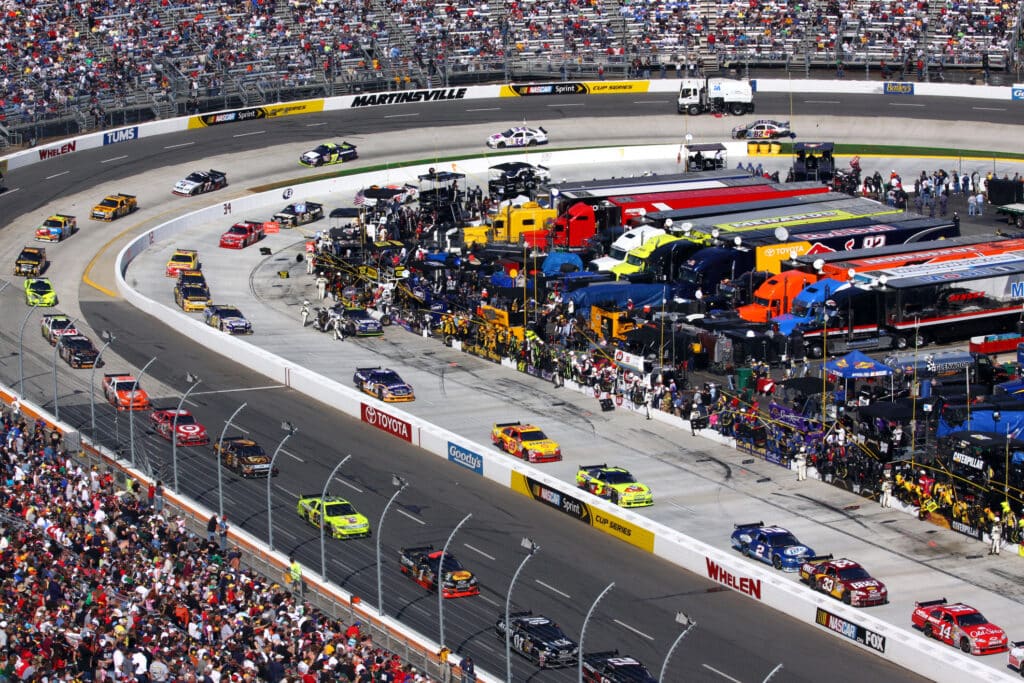No products in the cart.
Fun Facts
Harnessing Artificial Intelligence: The New Pit Crew Member in NASCAR’s Quest for Speed and Strategy
 Harnessing Artificial Intelligence: The New Pit Crew Member in NASCAR’s Quest for Speed and Strategy
Harnessing Artificial Intelligence: The New Pit Crew Member in NASCAR’s Quest for Speed and Strategy
When you conjure the high-octane world of NASCAR, the visceral roar of engines and the daring of human pilots probably eclipse any thoughts about machine learning algorithms and digital simulations. Yet, beneath the rubber-burning tracks and steely chassis of these race cars, a technological revolution ripples — a symphony of silicon and software — led by the avant-garde conductor known as Artificial Intelligence (AI).
Gone are the days when NASCAR’s winning equation comprised solely of a fast car, an intrepid driver, and a skilled pit crew. Today’s competitors understand that to pierce through the turbulence of opponents and reign supreme, they must embrace the prowess of AI.
Let’s decant this a bit.
The challenge of aerodynamics haunts every motorsport discipline. The air’s unpredictable dance around a speeding car dictates its performance, stability, and fuel consumption. Traditional wind tunnels, though effective, consume time and vast resources. Enter AI-driven aerodynamic simulations. These digital tools slice the air around virtual race cars, simulating millions of atmospheric interactions in mere moments. The insights derived don’t just offer tweaks; they provide transformative changes that render cars swifter and more efficient.
Now, journey with me to the realm of digital twins. Imagine an ethereal doppelganger of a race car, existing solely in the binary ether of a computer. This twin, fed with real-time data from its physical counterpart, emulates the behavior of the actual vehicle under any circumstance. NASCAR teams harness these twins to predict wear and tear, calibrate optimal tuning, and even preempt mechanical failures. It’s as if each team possesses a clairvoyant oracle, forecasting the unseen and the imminent.
Yet, the marvels of AI in NASCAR don’t halt at simulations and twins. Races, as any aficionado will proclaim, aren’t won solely on the track’s straight stretches but in the cerebral crevices of strategy. The maelstrom of data generated during races — tire temperatures, fuel consumption, lap times — demands deft analysis. Manual scrutiny? Quaint but quixotic. AI-powered software delves deep, discerning patterns imperceptible to the human gaze. From this alchemical process emerges not just data, but distilled wisdom — tactics that could be the difference between hoisting the trophy and languishing in the shadows.
One might argue: Isn’t this just technology usurping the human touch in yet another domain? Far from it. Envision AI as the unseen pit crew member, not replacing but augmenting human intuition. The relationship remains symbiotic. While AI might crunch numbers and weave simulations, the final call — that quintessential human judgment — remains in the hands of the team. In essence, AI doesn’t diminish the human spirit of racing; it amplifies it.
It’s a riveting time to be a spectator in the NASCAR amphitheater. As silicon synergizes with steel and software melds with strategy, one witnesses not just a race of cars but a thrilling confluence of man and machine. And as the checkered flag waves at the end of each race, remember: Behind that fleeting moment of triumph lies the profound dance of algorithms and insights, choreographed by the maestro called AI.



